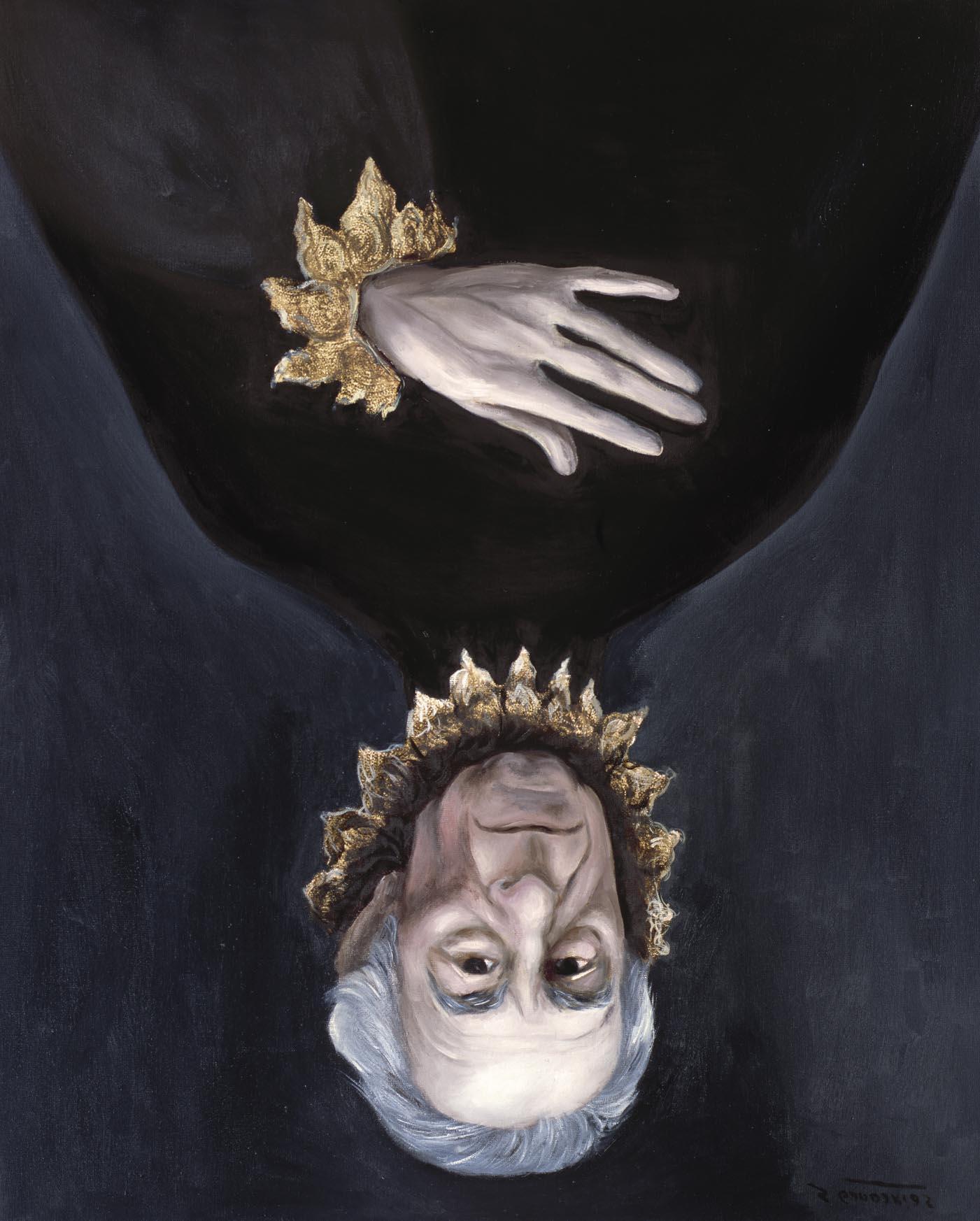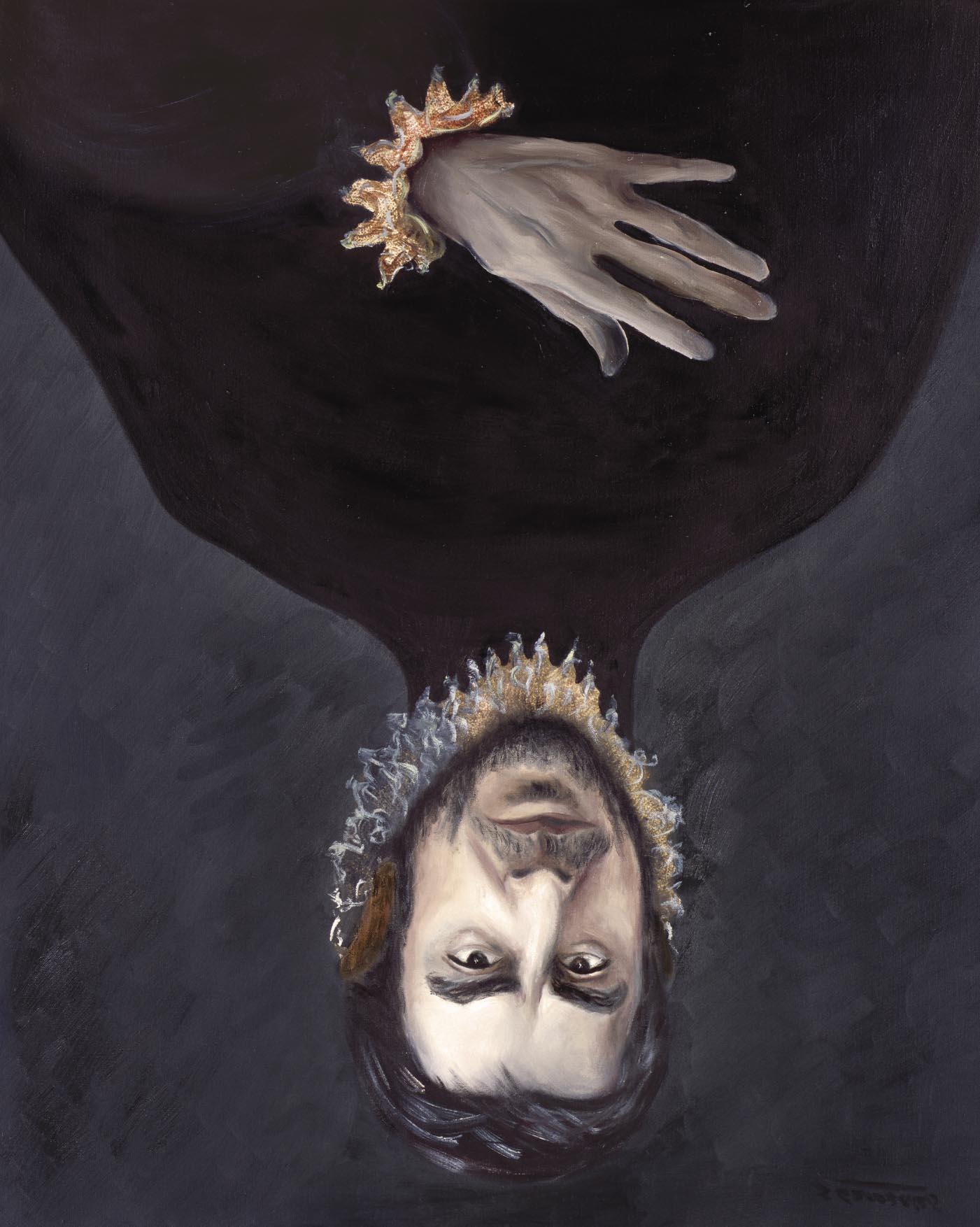Sofía Gandarias
25
Augusto Roa Bastos El ojo visionario de Sofía Gandarias
El ojo visionario de Sofía Gandarias
What is the significance of the art of the portrait –and od painting itself– for Sofia Gandarias? As she herself has said in relation lo the revolution brought about in modern painting by her master, Velazquez, the secret may lie in turning all painting into portraiture. This principle suggests that the presence of the human figure at the centre of her art does nor merely represent a preference for a certain kind of subject-matter; rather, it is the focal point of her vision of the world, life and society. Her art is thus the expression of -to put it in her own terms- a vital awareness of the world and the time that she lives in, in the spirit of a commitment which is both moral and aesthetic.This attitude implies a choice based on experience, as the very essence of her vocation. Her task is of great difficulty and complexity; it could be redefined. if we invert Velazquez's principie, as turning all portraiture into painting: that is, turning portraiture into the 'central idea' of painting.
¿Qué es el retrato, y, en definitiva, qué es la pintura para Sofía Gandarias? Acaso, como ella misma lo seña-a propósito de la revolución instaurada en la pintura moderna por su maestro Velázquez, consista en hacer que la pintura toda sea retrato. Principio que nos llevaría a entender que la figura humana en cuya estética se basa principalmente no es una simple preferencia temática, sino el centro focal de una visión del mundo, la vida, de la sociedad. Su estética se convierte así en expresión de lo que la artista llama conciencia vital de la realidad y del tiempo que le toca vivir. Actitud que ella asume como un compromiso a la vez ético y estético. Tal actitud define una elección experimentada como el sentido mismo de su vocación. La más difícil y compleja, la que podría redefinirse, invirtiendo el principio de Velázquez: hacer que el retrato todo sea pintura; o sea, hacer que el retrato se constituya en la «idea central» del hecho pictórico.
If we adopt this totalizing concept, then, by a kind of pictorial metonymy, the part or particular form -the portrait- comes to embody the whole painting- in all its varied manifestations. This idea arises at a rime when -as the artist herself recognizes- figurative forms, and especially portraiture, are in decline. Nevertheless, these forms are rooted in the beginnings of human history, and lie at the base of all the world's art. From Plato's cave to the caves of Altamira and the milieux of contemporary painting, shadow and profile have been synonymous with image –with the imago– which has been endlessly created and destroyed over history and prehistory.
Esta idea globalizadora concibe que por una suerte de metonimia pictórica una parte, una forma, el retrato, encarne la totalidad de la pintura en sus múltiples manifestaciones.Y todo esto en una época en que, como la propia artista lo reconoce, se asiste a la declinación de las formas figurativas, en particular la del retrato. Formas que sin embargo ahondan sus raíces en los comienzos de la historia humana y forman los orígenes sedimentarios de la historia universal del arte. Desde las cavernas de Platón a las cuevas de Altamira y los centros de pintura con-temporánea, sombra y figura son sinónimo de imagen (de la imago) que se integra y desintegra sin cesar en historia y prehistoria.
Augusto Roa Bastos was a Paraguayan writer, journalist and script author. He holds the Cervantes Prize, the Latin American Memorial Prize for Letters, andthe British Council Prize, among many others.
Augusto Roa Bastos fue un escritor, periodista y guionista paraguayo. Recibió el Premio Cervantes, el Premio de las Letras Memorial de América Latina, y el British Council Prize, entre muchos otros.





























